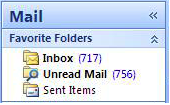Email Best Practices: Seven Keys To Improving Deliverability Metrics
- Published in Feature Articles
The best email integration and lead generation strategy will come up empty if messages go undelivered. The deliverability issue is as complex now as it was in the heyday of spam. The reasons range from better spam filter technology to aggressive ISP spam police to simply overloaded inboxes. Effective lead generation initiatives will account for and overcome deliverability obstacles.

Here are seven keys from companies who have mastered deliverability:
- Be aggressive: Privacy and deliverability standards do not mean that companies should be intimidated from email campaigns for lead gen purposes. To the contrary, our experts say that the rules are in place to make sure that “good” lead generation campaigns get through and “bad” ones are blocked. “Email is the future for us and our customers,” says Dennis Dayman, chief privacy and deliverability officer for Eloqua.
- Exercise good judgment: Email campaigns can provide key indicators about things that a company may not want to face. Maybe a group of once highly-scored leads has stopped responding. Maybe once hopeful leads have not responded to an initial outreach. “If that is the case, accept it for what it is,” says Chip House, VP industry and relationship marketing for Exact Target. “Put it in the cold file. Use a method other than email to get that prospect started. Don’t force it. Understand that deliverability is about reputation, and part of your reputation is knowing how to make progress with a client. Continually emailing a cold lead is not progress.”
- Personalize: Blocked emails are usually sent in bulk. It is almost impossible to send bulk emails if the message within, and the subject line, are personalized. “You don’t hear about social networks having spam problems because everything is automatically personalized,” says Marketbright co-founder Erik Bower. “Our research states that it takes three touches for a prospect to remember a brand. So personalize those initial touches and not only will they be delivered, but you stand a better chance of getting into a personalized relationship.”
- Consider your rating: Just as consumers have credit ratings, email intermediaries and ISPs keep email ratings. If a company’s email is delivered, opened, interacted with and maintains a minimal complaint level, the rating is high. If it lacks impact, opt-ins and spikes the unsubscribe level, the rating is low. You’re inviting the spam police. “You know who you’re sending to and you know the metrics involved,” says Dayman. “If your rating is dropping, optimize the campaigns to get the rating back up.”
- Timing and Frequency: In the B2C world companies take pains to match their email communications with the product purchase lifecycle and the customer engagement lifecycle. Customer engagement is defined as the extent to which a customer will provide a company with information and respond to information. In the B2B world, customer engagement is intensified by the smaller customer base and the depth of necessary information. “When you reach out and how often you reach out must be an automated and customized process,” says Vernon Tirey, CEO of Customer Development Solutions. “Welcoming email packages must go out automatically to good leads, but the message within needs to be customized in order to be delivered and then engaged.”
- Make it granular: In the B2B world, potential clients will take the time to consider the detail of a company’s product and service offering. So give them a lot of options regarding information content and frequency. “Clients understand the lead nurturing process and they want to see how they are going to engage with your email process,” says Will Schnabel, Vice President and General Manager International Markets for Silverpop. “Be as specific as possible and you will be able to automate the content and then be delivered consistently.”
- Engage the ISPs: “Deliverability algorithms are still something of a black art and they don’t need to be,” says Marketo CEO Phil Fernandez. He recommends knowing as much as possible about how ISPs put companies on white lists and the behaviors that will land them in deliverability limbo.
It's important to remember that deliverability is best achieved by continually optimizing the targeted customer, subject line, content, and offer. It is never a destination that a company really completes. A company is never "delivered," it is continually trying to achieve the highest rate of deliverability. The higher the deliverability rate, the better the opportunity for truly integrated lead generation.

